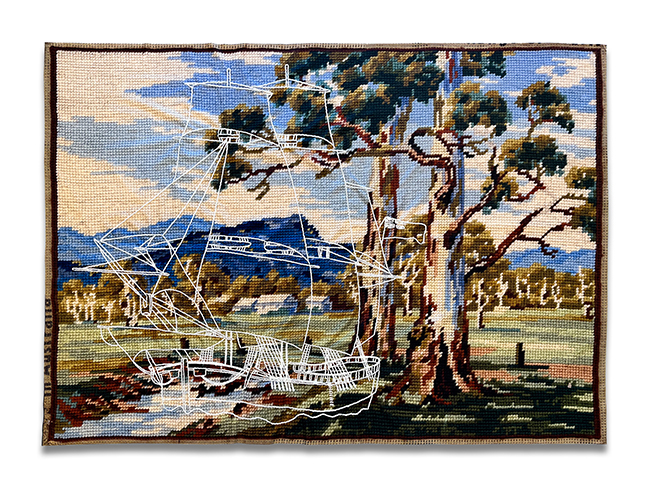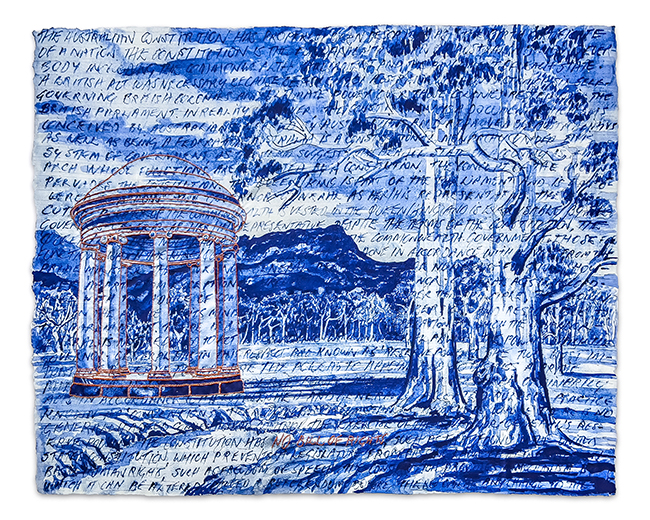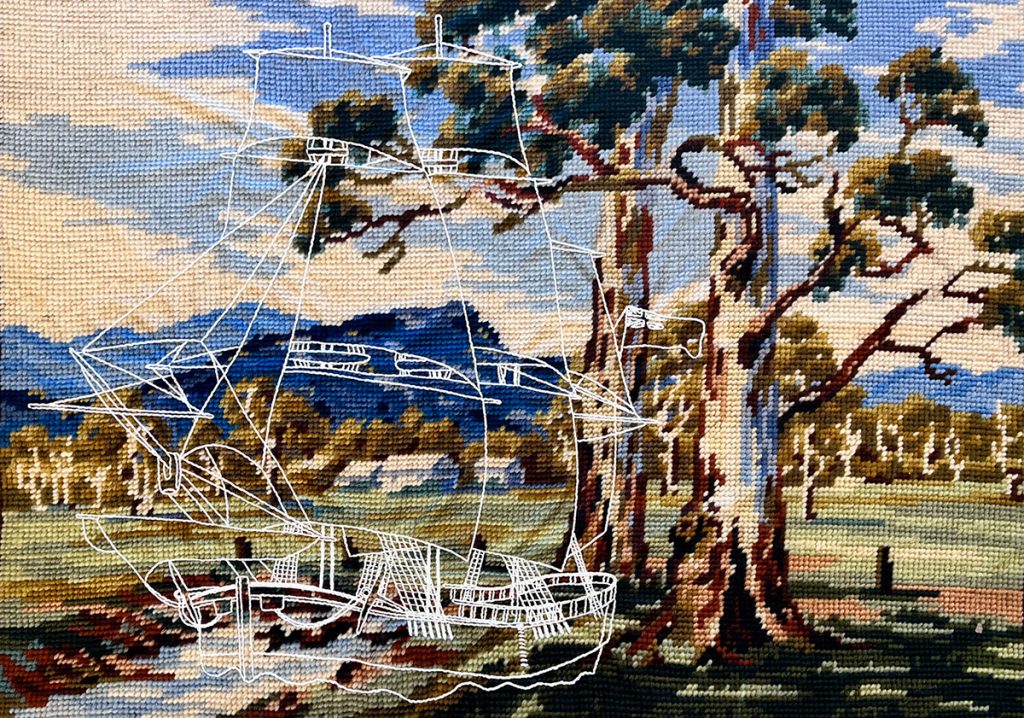Sebastian Di Mauro, an artist hailing from Australia, embarked on a transformative journey to the United States, a land far from his homeland. In this foreign terrain, he discovered not only the intricate interplay of identity but also a unique way to express it through his art.
His move was not simply a change of geography but a turning point in life. With his spouse, whose roots are in Wilmington, Delaware, Di Mauro immersed himself in a new cultural landscape. As a child in Australia, he had grown up fascinated by American imagery—television shows and films that portrayed the promise of the American Dream. Living in the U.S. revealed a more complex reality. The differences between imagined America and lived experience deepened his reflections on identity, belonging, and the dissonance of being far from family and the familiar. His art became a way to work through these contrasts, to layer memory, history, and place into tactile form.
Ghost Ship

In Ghost Ship, Di Mauro brings together photography, print, and textile in a hybrid form that bridges memory and critique. The work begins with a found, hand-stitched tapestry—an object already carrying history. He photographs it, prints it on fabric, and then intervenes again, this time by stitching across the surface with cotton and acrylic yarn. At 58 by 82.5 inches, the piece asserts presence, its surface rich with texture and meaning.
The process embodies the idea of layering. A personal history of making is embedded in the original tapestry. Di Mauro’s reworking places it in dialogue with larger social histories, particularly Australia’s entanglement with colonial structures. His stitches act like scars or sutures, binding and disrupting in the same gesture. They question what it means for a contemporary, multicultural nation to remain bound to traditions rooted in British monarchy.
Australia today is a place of hundreds of cultures, voices, and histories, yet its symbolic head of state still hails from across the sea. The monarchy, distant but present, hovers like a shadow. Through Stitched, Di Mauro illuminates this tension. The work acknowledges the beauty of cultural multiplicity, while also exposing how inherited systems of power continue to define national identity.
The tactile surface emphasizes the fragility of those bonds. Threads can unravel, patterns can shift, and new configurations can emerge. The work suggests that while colonial frameworks may still loom large, they are not immutable. Identity, like cloth, can be refashioned, restitched, made anew.
Stitched

In Stitched, he incorporates handwritten constitutional text. This large work, measuring 58 by 82.5 inches, begins again with a found tapestry. Di Mauro photographs it, prints it on textile, and hand-stitches it with ultraviolet yarn. The glow of the thread creates a spectral effect, as though the stitches themselves are alive, vibrating against the stillness of the printed image.
In this work, he incorporates handwritten constitutional text beneath the image, digitally layered and then overstitched with orange yarn. The result is a palimpsest—layers of language, imagery, and touch, each one both obscuring and revealing. The thread emphasizes rupture, underscoring disjunctions between surface and meaning, history and present.
The imagery centers on what Di Mauro describes as a “colonial folly”—a structure imported into the Australian rural landscape, out of place and out of time. The folly becomes a metaphor for settler imposition, for the architectural mimicry of ideals that were never native to the land. Its presence is incongruous, a reminder of how foreign models of governance, culture, and symbolism were sutured onto Indigenous ground.
The stitched intervention heightens this dissonance. The glowing and orange threads don’t attempt to reconcile the clash. Instead, they call attention to the absurdity of the graft, exposing the fragility of borrowed structures. Through the physical act of stitching, Di Mauro transforms the folly into a site of reflection. What does it mean for a society to stitch itself together with threads that do not belong to the fabric? What fractures are hidden beneath the surface?
Between Memory and Critique
Together, Stitched and Ghost Ship highlight Di Mauro’s approach: to take existing objects, images, and histories, and subject them to a process of layering and reworking. He turns textiles into sites of inquiry, where every stitch is both an act of care and an act of disruption.
The works are deeply tied to questions of identity, not just personal but national. They explore what it means to live within systems inherited from elsewhere, systems that can feel spectral—present yet not entirely real. In reworking found textiles, Di Mauro also points to the resilience of craft and the role of making as a way to navigate displacement.
His practice underscores that identity is never fixed. Like fabric, it can be pulled apart and restitched, sometimes clumsily, sometimes beautifully, but always bearing the marks of what came before. Through his art, Di Mauro invites viewers to confront the threads of history that bind and constrain, and to imagine the possibility of reweaving them into something more honest and inclusive.

